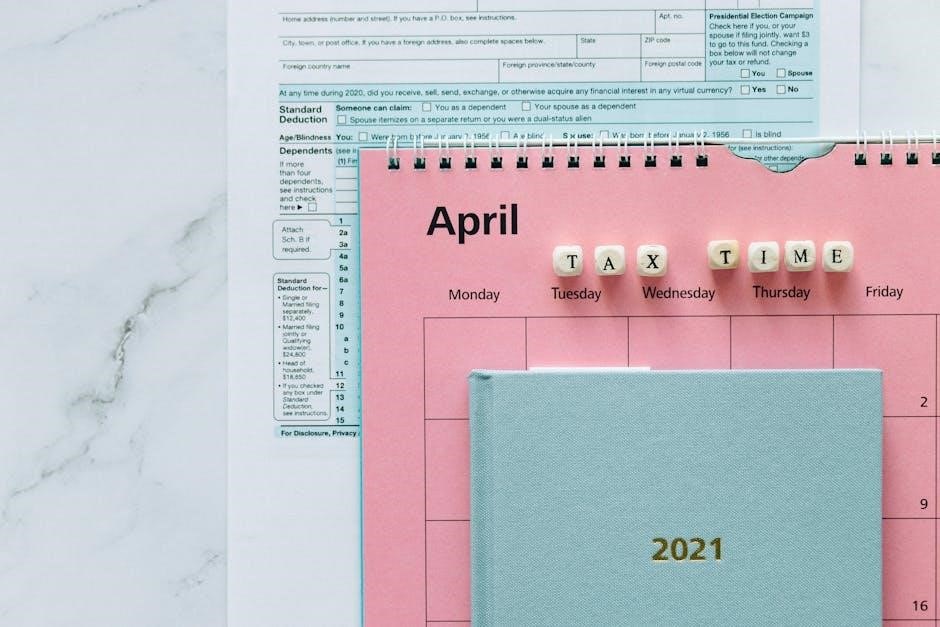A pay for deletion letter is a written request to remove negative credit entries in exchange for payment, aiding in credit repair and financial recovery.
1.1 What is a Pay for Deletion Letter?
A pay for deletion letter is a formal request sent to creditors or collection agencies, proposing the removal of negative credit entries in exchange for payment. It serves as a negotiation tool, allowing individuals to settle debts while requesting the deletion of associated negative marks from their credit reports. Typically, debtors offer to pay a percentage of the owed amount, often between 40% to 80%, in exchange for the creditor’s agreement to remove the negative item. This strategy is commonly used to improve credit scores and facilitate credit repair. The letter must be professionally drafted to clearly outline the terms of the settlement and the expectation of deletion. It is a proactive approach to resolving debt and restoring credit health.
1.2 Importance in Credit Repair
A pay for deletion letter plays a crucial role in credit repair by helping individuals eliminate negative credit entries that harm their credit scores. Negative marks, such as late payments or collections, can significantly lower credit scores and remain on reports for up to seven years. By requesting deletion, individuals can improve their creditworthiness and access better loan terms. This letter demonstrates a proactive approach to resolving debt, which can positively influence creditors and lenders. Successfully removing negative items can raise credit scores, reduce financial stress, and create opportunities for future credit approvals. It is a valuable tool for those aiming to rebuild their financial health and regain control over their credit profiles.

Purpose of a Pay for Deletion Letter
A pay for deletion letter aims to negotiate the removal of negative credit entries in exchange for payment, improving credit scores and financial standing effectively.
2.1 A Negotiation Tool for Credit Repair
A pay for deletion letter serves as a strategic negotiation tool in credit repair, enabling individuals to request the removal of negative credit entries in exchange for settling debts. By proposing a payment, consumers can leverage this letter to regain control over their credit reports. It acts as a formal request to creditors or collection agencies, outlining the terms under which the debtor is willing to settle outstanding obligations. This approach allows for a proactive stance in addressing derogatory marks, potentially improving credit scores. While not guaranteed, a well-crafted letter demonstrates a commitment to resolving debts, which may encourage creditors to consider the request favorably. Ultimately, it empowers individuals to take charge of their financial health and work toward a cleaner credit history.
2.2 How It Facilitates Debt Settlement
A pay for deletion letter is a formal agreement that streamlines the debt settlement process by providing a clear framework for resolving outstanding debts. It allows debtors to propose specific terms for payment in exchange for the removal of negative entries from their credit reports. This approach ensures that both parties—creditors and debtors—have a structured path forward, reducing ambiguities and potential disputes. By offering a settlement amount, debtors demonstrate their commitment to resolving the debt, which can motivate creditors to accept the offer. This method not only expedites the resolution process but also provides a legally binding agreement, ensuring that once the payment is made, the debt is settled and the negative entry is removed. This mutual benefit fosters a smoother and more efficient debt settlement experience for all involved.

Structure of a Pay for Deletion Letter
A pay for deletion letter typically includes debtor information, account details, settlement terms, and authorization for deletion upon payment, ensuring clarity and professionalism in the request.
3.1 Essential Sections to Include
A pay for deletion letter should include several key sections to ensure effectiveness. First, your personal and account information, such as your name, address, and account number, must be clearly stated. Next, outline the settlement offer, specifying the amount you are willing to pay and the condition that the debt will be marked as “paid in full” or deleted from your credit report. Include a request for written confirmation of the agreement and a timeline for processing the payment. Finally, add a section for authorization, allowing the creditor to process the payment and update your credit records accordingly. These sections ensure clarity, professionalism, and a clear understanding of the terms. Using a pay for deletion letter PDF template can help organize these elements effectively.
3.2 Formatting and Tone Considerations
When drafting a pay for deletion letter, proper formatting and tone are crucial for professionalism and clarity. Use a formal business letter format with your contact information, the creditor’s address, and a clear subject line. Maintain a polite yet firm tone to convey your request without sounding confrontational. Avoid emotional language and focus on the facts. Ensure the letter is concise, well-organized, and free of errors. Using a pay for deletion letter PDF template can help maintain a professional structure. Include a courteous closing, such as “Sincerely,” followed by your signature. The tone should balance assertiveness with respect, making it more likely to be taken seriously by the creditor. Proper formatting and tone enhance the letter’s effectiveness and professionalism.

Key Components of a Pay for Deletion Letter
- Personal and account information to verify identity and reference the specific debt.
- Settlement offer outlining the proposed payment and deletion request.
- Payment terms detailing the method and timeline for settlement.
4.1 Personal and Account Information
A Pay for Deletion Letter must include accurate personal and account information to ensure clarity and legitimacy. This includes the debtor’s full name, address, and contact details, as well as the creditor’s name and address. The account number associated with the debt should be clearly stated to avoid confusion. Additionally, details such as the original creditor’s name (if different from the current creditor) and the date of the original agreement or charge-off should be provided. Including this information helps verify the debtor’s identity and ensures the letter is directed to the correct department. Accuracy is crucial, as any missing or incorrect details could delay or invalidate the request. This section lays the foundation for a credible and actionable proposal.
4.2 Settlement Offer and Payment Terms
The settlement offer and payment terms are crucial components of a Pay for Deletion Letter. They outline the proposed agreement between the debtor and creditor, specifying the amount to be paid and the expected deletion of the negative entry from the credit report. The letter should clearly state the settlement amount, acceptable payment methods, and the timeline for payment. It’s important to include a request for written confirmation of the agreement and assurance that the deletion will be processed upon payment. Clarity and specificity in this section ensure both parties understand the terms, reducing the risk of disputes. A well-defined payment plan increases the likelihood of a favorable response from the creditor.

Effectiveness of Pay for Deletion Letters
Pay for Deletion Letters are a proven strategy to remove negative credit entries, with success rates varying based on creditor policies and negotiation skills.
5.1 Success Rates and Outcomes
Pay for deletion letters have shown varying success rates, typically ranging between 50% to 70%, depending on creditor policies and negotiation skills. When successful, they can result in the removal of negative items from credit reports, significantly improving credit scores. The outcome often leads to a 50-100 point increase in credit scores, enhancing overall creditworthiness. Debtors who negotiate effectively may achieve partial or full debt forgiveness, reducing financial burdens. The process typically yields results within 30-45 days, making it a viable option for credit repair. However, success hinges on creditor willingness and proper execution of the letter. Follow-up with credit bureaus is essential to ensure changes are implemented.
5.2 Factors Influencing Their Success
The success of pay for deletion letters depends on several factors, including creditor policies, debt accuracy, and negotiation skills. Creditors with flexible policies are more likely to accept settlement offers. The accuracy of the debt in question also plays a role; discrepancies can strengthen the case for deletion. Additionally, the debtor’s negotiation approach and the tone of the letter significantly impact outcomes. A well-crafted, polite, and professional letter increases the likelihood of a favorable response. Timing also matters, as submitting the letter during a creditor’s settlement period may yield better results. Overall, understanding these factors and tailoring the letter accordingly can enhance its effectiveness. Proper execution and persistence are key to achieving desired outcomes.

Sample Pay for Deletion Letter
A sample pay for deletion letter is a downloadable template that provides a structured format for requesting debt removal; It includes placeholders for personal and account details, settlement offers, and deadlines, ensuring clarity and professionalism. This template is designed to be easily customizable, making it an effective tool for individuals seeking to negotiate debt settlements and improve their credit scores. By following the template, users can present their case clearly and increase the likelihood of a favorable response from creditors.
6.1 Template Overview and Features
A pay for deletion letter PDF template provides a comprehensive and organized framework for drafting a request to creditors. It typically includes placeholders for personal and account information, settlement offers, and payment terms. The template is designed to be user-friendly, allowing individuals to input specific details relevant to their situation. Features often include professional formatting, clear sections for negotiation points, and guidelines to ensure the letter is concise and impactful. Many templates also offer customization options, enabling users to tailor the content to their unique circumstances. By using a PDF template, individuals can ensure their letter appears polished and professional, which can enhance the credibility of their request. This tool is particularly useful for those unfamiliar with legal or financial correspondence.
6.2 Customization Tips for Effectiveness
Customizing a pay for deletion letter PDF is crucial for maximizing its impact. Start by personalizing the tone to align with the creditor’s policies and your financial situation. Include specific account details and clearly state the settlement amount you are offering; Use polite yet firm language to request deletion of the negative item in exchange for payment. Offer multiple payment options to demonstrate flexibility. Highlighting your commitment to resolving the debt can strengthen your case. Always include a deadline for the creditor to respond, creating a sense of urgency. Ensure the letter is professionally formatted and free of errors. Finally, consider adding a note requesting confirmation of the agreement in writing. These adjustments can significantly enhance the letter’s effectiveness and improve the likelihood of a favorable response.

Pay for Deletion Letter Templates
Pay for deletion letter templates are readily available online as downloadable PDFs, offering a professional structure to craft your request efficiently and effectively.
7.1 Downloading and Using PDF Templates
Downloading and using PDF templates for pay for deletion letters is a convenient way to streamline the process. These templates are widely available online and are designed to be user-friendly. They typically include placeholders for personal and account information, settlement offers, and payment terms, allowing you to customize the letter according to your specific needs. Once downloaded, you can easily edit the template using PDF editing software or convert it to a Word document for easier modifications. After customizing, print and send the letter to your creditor or collection agency. Ensure all details are accurate and the tone remains professional to increase the likelihood of a positive response.
7.2 Benefits of Professional Templates
Professional pay for deletion letter PDF templates offer numerous benefits, enhancing the effectiveness of your credit repair efforts. They provide a polished and structured format, ensuring your request appears credible and well-organized. These templates are designed by experts, incorporating legal and financial knowledge to maximize the likelihood of a favorable response. They save time by eliminating the need to draft a letter from scratch, allowing you to focus on customization. Professional templates also reduce errors, ensuring all necessary information is included. Additionally, they maintain a consistent tone and format, which can improve your negotiation stance. By using a professional template, you can present a compelling case to creditors, increasing the chances of a successful deletion.

Process of Using a Pay for Deletion Letter
Using a pay for deletion letter involves drafting, sending, and following up with creditors. Ensure proper mailing and verification for effective results.
8.1 Drafting and Sending the Letter
Drafting a pay for deletion letter requires clarity and specificity. Start by stating your intention to settle the debt and request removal of the negative item from your credit report. Include your account number, the agreed-upon settlement amount, and a request for written confirmation of the agreement. Maintain a professional and polite tone to encourage a positive response. Once drafted, send the letter via certified mail with a return receipt to ensure proof of delivery. Attach a check or provide payment details as specified. Keep copies of all documents for your records. This step is critical for initiating the deletion process and protecting your rights.
8.2 Follow-Up Actions and Next Steps
After sending the pay for deletion letter, monitor the situation closely. Follow up with the creditor if no response is received within 30 days. Verify that the agreed-upon deletion has been processed by checking your credit report. If the negative item remains, contact the credit bureau to dispute it, providing proof of the agreement. Maintain detailed records of all communications. If the creditor refuses, consider escalating the issue or seeking legal advice. Ensure all payments are made as agreed to avoid further complications. Follow-up actions are crucial to ensuring the deletion is honored and your credit score improves.

Legal Considerations
After sending the pay for deletion letter, monitor the situation closely. Follow up with the creditor if no response is received within 30 days. Verify that the agreed-upon deletion has been processed by checking your credit report. If the negative item remains, contact the credit bureau to dispute it, providing proof of the agreement. Maintain detailed records of all communications. If the creditor refuses, consider escalating the issue or seeking legal advice. Ensure all payments are made as agreed to avoid further complications. Follow-up actions are crucial to ensuring the deletion is honored and your credit score improves.
9.1 Understanding CRA Policies
Understanding Credit Reporting Agency (CRA) policies is crucial when using a pay for deletion letter. The Fair Credit Reporting Act (FCRA) governs how credit information is collected, used, and disputed. While pay for deletion letters aim to remove negative items, CRAs like Equifax, Experian, and TransUnion have specific guidelines. They may not always honor such requests, as their primary role is to ensure accurate credit reporting. It’s important to know that payment for deletion isn’t legally guaranteed, but it can be negotiated with creditors. Familiarizing yourself with CRA policies helps you understand the legal framework and ensures compliance when drafting your letter. This knowledge also aids in disputes if the deletion isn’t properly processed.
9.2 Importance of Record Keeping
Keeping detailed records is essential when using a pay for deletion letter. This includes maintaining copies of the letter, receipts, and all correspondence with creditors. Proper documentation ensures accountability and provides evidence if disputes arise. Record keeping helps track progress, verify payments, and confirm deletions. It also serves as proof of compliance with legal requirements. Organized records can expedite the process and ensure creditors uphold their agreements. Additionally, having a clear paper trail can be invaluable if further legal action or disputes occur. Regular updates and secure storage of these documents are highly recommended to maintain clarity and accessibility throughout the credit repair process.

Tips for Writing an Effective Letter
Clarity, professionalism, and conciseness are key. Include specific account details, clearly state your request, and maintain a polite tone to increase the likelihood of a positive response.
10.1 Best Practices for Crafting Your Letter
When drafting a pay for deletion letter, clarity and professionalism are paramount. Always include your name, address, and account details for verification. Clearly state your intention to request deletion of the negative item in exchange for payment. Maintain a polite and respectful tone, avoiding aggressive language. Structuring the letter with a header, salutation, body, and closing ensures a professional appearance. Specify the settlement amount and payment terms, offering flexibility to encourage agreement. Attach supporting documents if necessary. Set a reasonable deadline for the creditor’s response and request written confirmation of the agreement. Keep a copy for your records and follow up if no response is received within the specified timeframe. Proofread thoroughly to avoid errors.
10.2 Common Mistakes to Avoid
When crafting a pay for deletion letter, it’s crucial to avoid common pitfalls that can undermine its effectiveness. One frequent mistake is omitting essential information like your name, address, and account details, which are necessary for verification. Another error is adopting an aggressive or confrontational tone, which may deter the creditor from considering your request. Poor formatting can also diminish professionalism, so ensure your letter includes a header, salutation, body, and closing. Failing to clearly outline settlement terms, such as the payment amount and deadline, can lead to confusion. Neglecting to keep a copy of the letter for your records is another oversight, as it may be needed for follow-up or proof of submission. Additionally, not attaching supporting documents, like payment receipts or agreements, weakens your case. Many individuals also make the mistake of not following up if they don’t receive a response within the specified timeframe. Furthermore, being inflexible or making excessive demands can discourage the creditor from accepting your offer. Lastly, a lack of understanding of creditor policies or legal requirements can result in the letter being disregarded. By steering clear of these errors, you can enhance the likelihood of a successful outcome.
